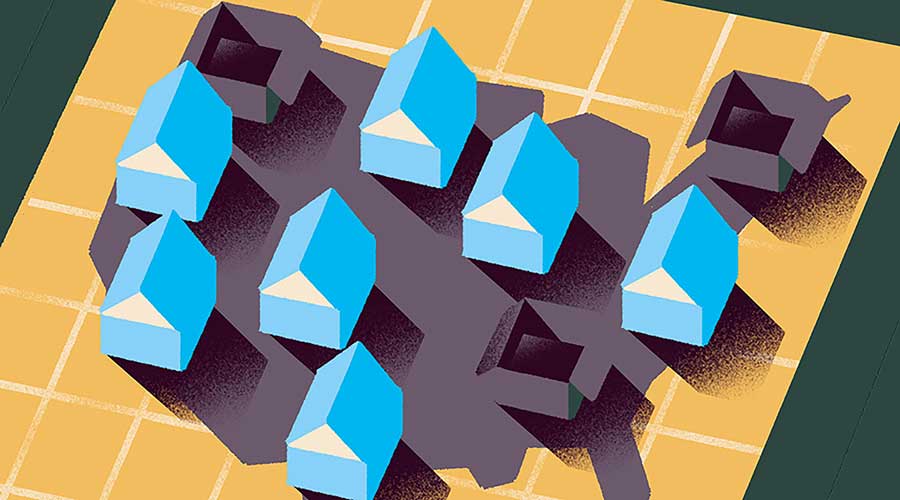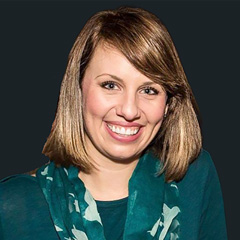Eight communities share motivations for joining Community Solutions’ Built for Zero movement working to solve homelessness.
Community Solutions’ Built for Zero Collaborative welcomed a group of eight new communities to its movement, bringing the total to 98. These communities officially joined during the fall 2021 virtual learning session, hailing from across the country. Built for Zero works with Continuums of Care (CoC) — regional or local planning bodies that coordinate housing and services funding for homeless families and individuals — to help their communities change how local homeless response systems work and the impact they can achieve.
Eight New Communities
- Central Oregon CoC
- Northwest Louisiana CoC
- Omaha/Council Bluffs CoC, Nebraska
- Pinellas County CoC, Florida
- Portland, Gresham/Multnomah County CoC, Oregon
- Salt Lake County CoC, Utah
- Thurston County CoC, Washington
- West Virginia Balance of State CoC
With “community superpowers” like innovation, collaboration, and “a rabid person-centered, and housing-first philosophy,” these communities fervently share one belief—that homelessness is solvable.
Learn more about each of the new Built for Zero communities below.
*Some responses have been edited for length and clarity.

Central Oregon CoC
Why our community wanted to join Built for Zero:
We have struggled for years on strategies and streamlined approaches to address the increasing homelessness crisis our community and nation is facing. After participating in the Quality By-Name Starter Kit this past spring/summer, we knew that continuing to engage in collecting quality data will only help leverage our opportunities to engage those in decision making places to rely on the data and fill gaps to address homelessness.
Our community’s superpowers:
Coordination among service providers.
One of the biggest challenges our community faces in ending homelessness:
Lack of housing inventory and affordable housing.
Homelessness is solvable, because…
…if we have open minds and willingness to think creatively, we can create space for all community members where they can call home.
Northwest Louisiana CoC
Why our community wanted to join Built for Zero:
We want to streamline our homeless system to focus on ending homelessness.
Our community’s superpowers:
Our community of homeless providers has very strong relationships, communication, and engagement.
One of the biggest challenges our community faces in ending homelessness:
Lack of affordable housing that can pass habitability standards or are too restrictive on backgrounds.
Homelessness is solvable, because…
…we have never had a client reject permanent housing that is desirable and affordable to them.
Omaha/Council Bluffs CoC, Nebraska
Why our community wanted to join Built for Zero:
We are excited for a structured and aligned effort to join with Built for Zero, to help our community get into a better place in regards to ending homelessness.
Our community’s superpowers:
Great collaboration, generous donors, experience with catalytic initiatives, and proven mobilization. We are able to work quickly and pull people together. Our community is open-minded, with a “get it done” attitude and true leadership.
One of the biggest challenges our community faces in ending homelessness:
Lack of accountability to each other, and agencies being passive and not taking initiative.
Homelessness is solvable, because…
…we are all here together to make it happen.
…of you all.
…of long-term commitment to our work.
…everything is solvable.
…we listen to the people navigating our systems.
… community buys into the idea of housing those in need.
Pinellas County CoC, Florida
Why our community wanted to join Built for Zero:
To learn from other communities and to help create a rallying point for a population that has long felt intractable for the community
Our community’s superpowers:
Our community has whole heartedly adopted Housing First.
Collaboration. People are very giving of their time and engaged in the CoC. Many providers will do whatever it takes to serve a client. Our community has whole heartedly adopted Housing First, and even local funders require it for funding. We have a willingness to adapt.
One of the biggest challenges our community faces in ending homelessness:
Constant inflow—10 percent of our clients migrate monthly from other areas. We have the same challenges as every community—territoriality among agencies, low wages, and not enough affordable housing or other wraparound support.
Homelessness is solvable, because…
…we have the will to solve it.
Portland, Gresham/Multnomah County CoC, Oregon
Why our community wanted to join Built for Zero:
Because we want more transparent data and data used more proactively. We are looking at a large infusion of funding and Built for Zero is envisioned as a way to better utilize these funds in a more transparent fashion.
Our community’s superpowers:
We have a lot of experts in our community, and a lot of stakeholders who are actively involved in collaborating around homeless services. We also have a strong equity lens and a desire to center equity in all of our work and programming.
One of the biggest challenges our community faces in ending homelessness:
A large rise in homeless services, and a significant rent burden, as well as lack of housing stock. While we have a housing bond that can fund services, launching those services as quickly and equitably as possible is a challenge, especially with a lack of affordable housing to attach funding to.
Homelessness is solvable, because…
…we know the solutions that work.
Salt Lake County CoC, Utah
Why our community wanted to join Built for Zero:
To enhance efforts to end homelessness
Our community’s superpowers:
Strong, collaborative relationships among partners
One of the biggest challenges our community faces in ending homelessness:
Lack of understanding of issues among policy makers in ending homelessness
Homelessness is solvable, because…
…we know that when energy and resources are focused, real results can be achieved.
Thurston County CoC, Washington
Why our community wanted to join Built for Zero:
Providers in our community are fairly familiar with Built for Zero. In fact, in 2017 while updating the five-year plan, the principles of functional zero and a focus on the veteran population for reducing homelessness to functional zero was our focus.
Homelessness is and has been on the rise, and unsheltered homelessness is endemic. Having outside support and perspective is vital to addressing homelessness in innovative ways.
Our community’s superpowers:
Bright, passionate, out-of-the box subject matter experts. In our system, we have some of the most innovative and justice-oriented folks. We are also attempting to make significant headway in addressing racial disparities in our system.
One of the biggest challenges our community faces in ending homelessness:
Lack of sustainable resources, NIMBYism, and limited and stretched provider capacity.
Homelessness is solvable, because…
…housing is a human right.
West Virginia Balance of State CoC
Why our community wanted to join Built for Zero:
We have a history with Community Solutions, and we feel we are in an excellent place with staff, partners, resources, and policy work to make the leap with Built for Zero.
Our community’s superpowers:
Flexibility, dogged focus and determination, and a rabid person-centered, and housing-first philosophy. Also, more resources currently than has ever been the case.
One of the biggest challenges our community faces in ending homelessness:
The political climate, the infrastructure of partner organizations, the infrastructure of state funders and cultural viewpoints, generally.
Homelessness is solvable, because…
…it is simply a matter of will, logistics, and a desire to allocate resources in a way that has the most impact, and then constantly refining and improving.
This article was originally published on the Community Solutions website.
View Community Solutions profile ›




